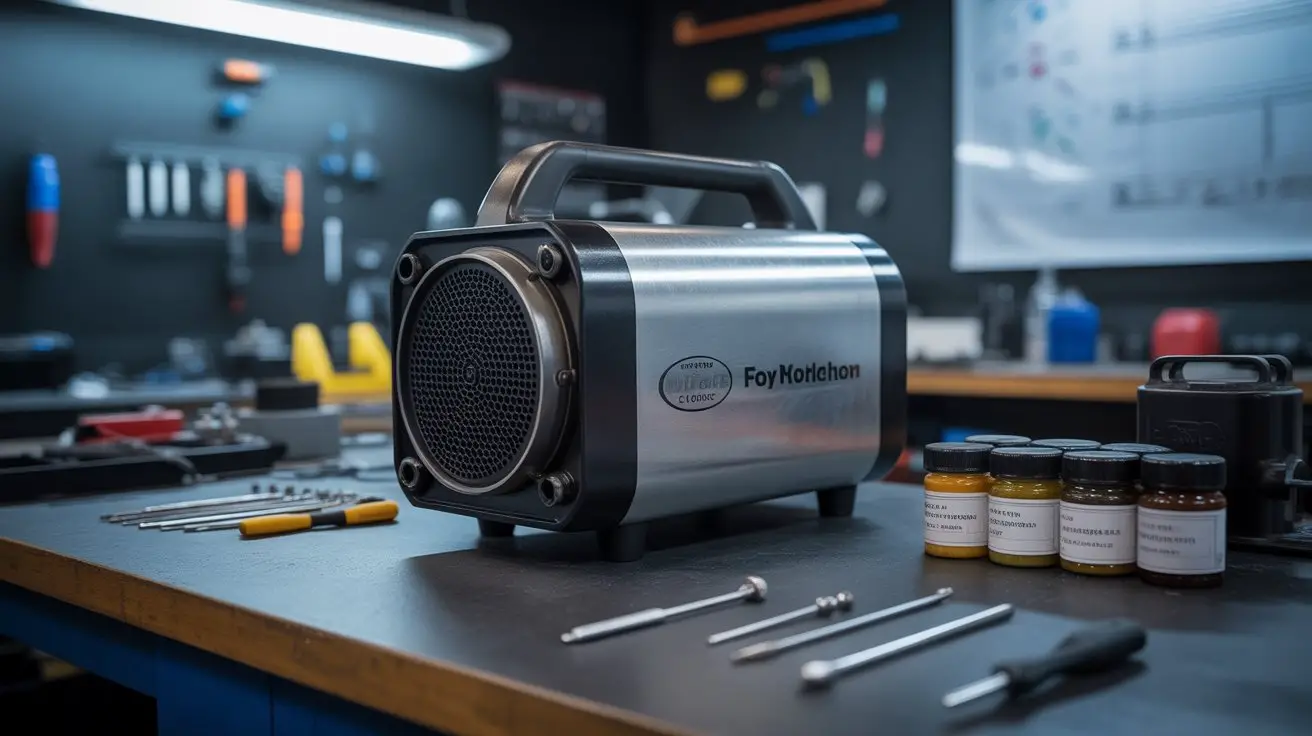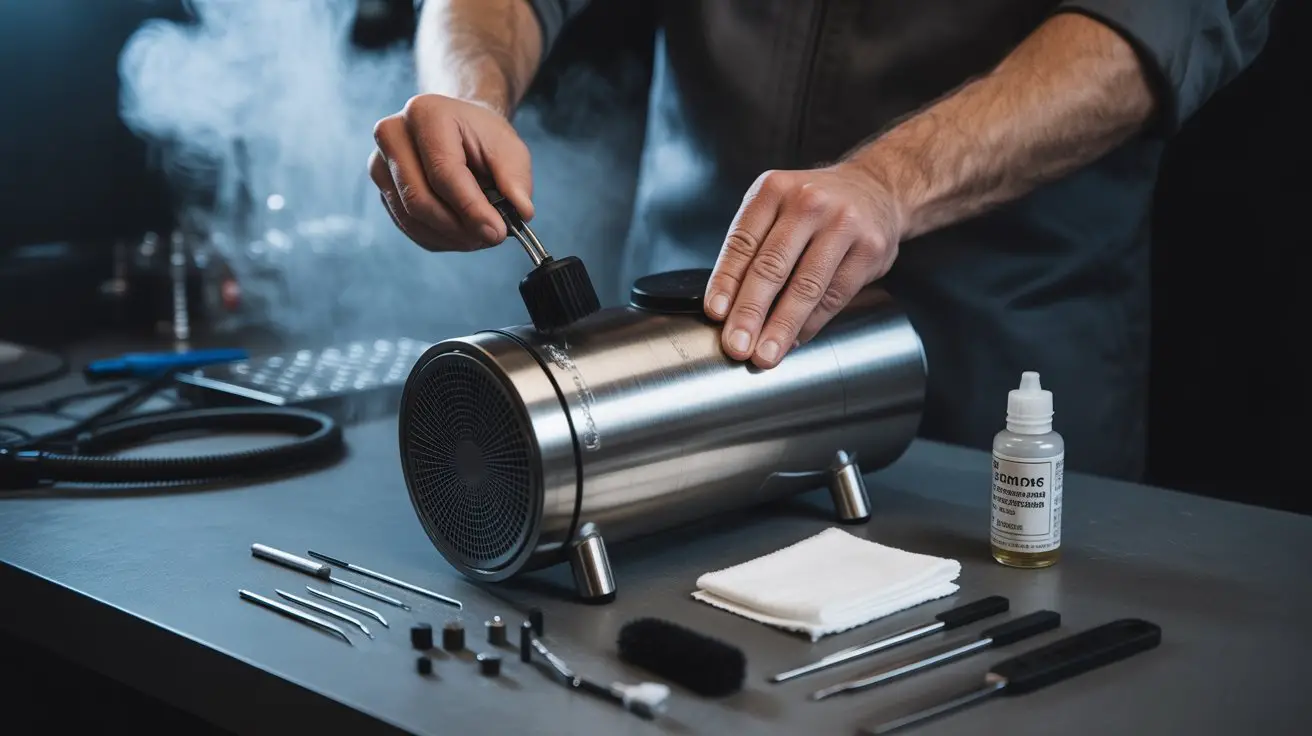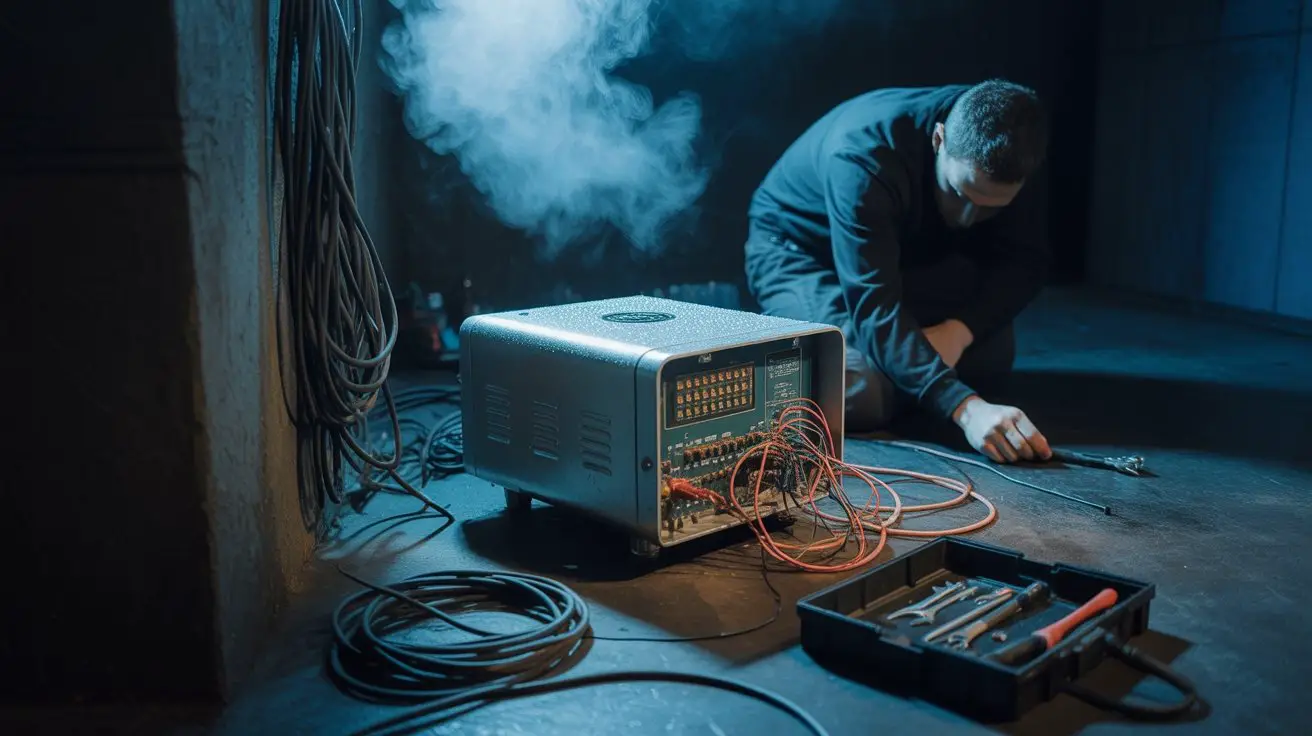Your fog machine will absolutely devour itself from the inside out if you neglect proper maintenance protocols. You’re dealing with heated fluid systems, precision nozzles, and electronic components that demand specific care procedures to prevent catastrophic failures. Most operators skip critical weekly flushing routines and ignore early warning signs of thermostat irregularities. Without understanding the exact maintenance sequences for your specific model, you’ll face expensive repairs that could’ve been prevented with proper preventive measures.
Understanding Your Fog Machine Components
Your fog machine operates through four critical components that determine both performance and longevity. The heating element transforms fog fluid into vapor, requiring temperatures between 400-500°F for proper atomization.
You’ll find this element housed within the heat exchanger block, which distributes thermal energy evenly across the fluid pathway.
The pump system controls fluid delivery from the reservoir to the heating chamber. Most units use either diaphragm or peristaltic pumps, each requiring specific maintenance protocols.
Your thermostat regulates operating temperature, preventing overheating that damages internal components.
The fluid pathway includes inlet tubes, heating chamber, and output nozzle. Blockages here cause pressure buildup and component failure. Additionally, regular cleaning clogged hoses is essential to maintain optimal performance and avoid operational issues.
Understanding these interconnected systems helps you identify maintenance needs before costly repairs occur.
Essential Tools and Supplies for Maintenance

Before undertaking any fog machine maintenance, gather specialized tools that guarantee safe and effective servicing.
You’ll need precision instruments designed for fluid-handling equipment to prevent damage and secure peak performance.
Your maintenance toolkit should include:
- Digital multimeter – Test electrical circuits, verify voltage readings, and diagnose heating element functionality with accurate measurements.
- Distilled water and cleaning solutions – Remove mineral deposits and fog fluid residue using manufacturer-approved solvents that won’t corrode internal components.
- Compressed air canister – Clear debris from intake vents, cooling fans, and internal passages without introducing moisture or contaminants.
- Non-conductive brushes and swabs – Access tight spaces around heating chambers and fluid reservoirs while maintaining electrical safety protocols.
Additionally, consider using regular maintenance practices to prolong the life of your fog machine and reduce repair costs.
Store these tools in a dedicated maintenance kit for consistent availability during scheduled service intervals.
Weekly Cleaning Procedures

Weekly maintenance cycles prevent fluid blockages and extend your fog machine’s operational lifespan through systematic cleaning protocols.
Begin by disconnecting power and draining residual fog fluid completely. Remove the fluid tank and rinse with distilled water three times.
Inspect the heating element for mineral deposits—use a soft brush to remove buildup carefully. Clean the output nozzle with compressed air to clear blockages.
Wipe down the exterior housing with isopropyl alcohol to prevent dust accumulation. Check all electrical connections for corrosion or loose contacts.
Refill the tank with fresh fog fluid, ensuring you’re using manufacturer-approved formulations. Regular maintenance enhances the longevity of the fog machine and test operation briefly to verify proper heating and fog output before storage.
Fluid System Maintenance and Flushing

Although fog machines appear mechanically simple, their fluid systems require specialized flushing procedures to prevent crystallization and pump damage.
Regular flushing removes residue buildup that can clog internal components and compromise performance.
Execute proper fluid system maintenance using this sequence:
- Drain remaining fluid – Empty the reservoir completely and wipe interior surfaces with lint-free cloth.
- Fill with distilled water – Use only distilled water to avoid mineral deposits in pump chambers.
- Run complete flush cycle – Operate machine for 2-3 minutes until clear water vapor emerges.
- Final purge and dry – Empty water reservoir and run brief heating cycle to evaporate residual moisture.
You’ll extend pump life considerably by performing monthly flushes, especially when switching fluid types or storing equipment long-term. Regular cleaning and maintenance are crucial for proper functioning to prevent issues.
Nozzle Cleaning and Unclogging Techniques

When fog output diminishes or produces uneven patterns, nozzle blockages typically cause these performance issues.
You’ll need to disassemble the nozzle assembly after powering down and cooling the machine completely. Remove the nozzle using appropriate wrenches, noting the orientation for reassembly.
Soak metal nozzles in distilled water for 30 minutes to dissolve crystallized fog fluid residue. Use a soft-bristled brush or compressed air to dislodge stubborn deposits.
Never use metal tools that could damage precision-machined surfaces.
For severe blockages, create a cleaning solution using equal parts distilled water and white vinegar. Soak for one hour, then rinse thoroughly with distilled water. Regular cleaning enhances fog machine performance and prevents future clogs.
Inspect the nozzle opening under bright light to verify complete debris removal before reinstalling with proper torque specifications.
Troubleshooting Common Performance Issues

Beyond nozzle-related problems, fog machines can exhibit various performance issues that require systematic diagnosis and resolution.
You’ll need to methodically check each system component to identify the root cause.
Common performance problems include:
- Insufficient fog output – Check fluid levels, verify pump operation, and inspect heating element functionality using a multimeter.
- Intermittent operation – Examine electrical connections, test thermostat calibration, and guarantee proper ventilation around cooling vents.
- Unusual noises – Listen for pump cavitation, loose mounting hardware, or fan bearing wear that indicates component failure.
- Overheating shutdown – Verify ambient temperature limits, clean air intake filters, and test thermal protection circuits.
Always disconnect power before performing diagnostic procedures.
Use appropriate PPE and follow manufacturer’s safety protocols during troubleshooting.
Preventing Mineral Deposits and Buildup

Since mineral deposits represent one of the most destructive threats to fog machine longevity, you’ll need to implement a proactive prevention strategy that addresses water quality, fluid selection, and regular maintenance intervals.
Use only distilled water in your fog fluid mixture—tap water contains calcium, magnesium, and other minerals that crystallize on heating elements and internal surfaces. Choose high-quality fog fluids with minimal additives, as cheaper alternatives often contain impurities that accelerate buildup.
Establish weekly cleaning cycles using manufacturer-approved cleaning solutions. Run distilled water through the system after each use to flush residual fog fluid.
Monitor your machine’s output quality; reduced fog density or unusual sounds indicate mineral accumulation. Install inline water filters if your region has extremely hard water, ensuring consistent fluid purity.
Long-Term Storage and Seasonal Care

Although fog machines often face months of dormancy between peak usage seasons, proper storage preparation determines whether your equipment emerges ready for immediate operation or requires extensive repairs.
Complete these essential storage steps to protect your investment:
- Drain all fluid systems – Remove fog fluid from reservoir and flush internal lines with distilled water to prevent crystallization and component damage.
- Disassemble removable components – Separate heating elements, filters, and fluid lines for individual cleaning and inspection before storage.
- Apply protective measures – Coat metal surfaces with light machine oil and store in moisture-controlled environment between 50-70°F.
- Document maintenance records – Log storage date, fluid type last used, and component conditions for next season’s startup procedures.
Safety Precautions During Maintenance

Following proper storage protocols protects your equipment, but maintaining fog machines safely requires strict adherence to electrical and chemical safety standards.
Always disconnect power before performing maintenance tasks. Wear nitrile gloves when handling fog fluid to prevent skin irritation from glycol-based solutions. Verify adequate ventilation during cleaning procedures, as residual chemicals can release harmful vapors when heated or mixed with solvents.
Never use water near electrical components. Use only manufacturer-approved cleaning agents on heating elements and internal chambers. Allow complete cooling before accessing internal parts—heating elements can exceed 400°F during operation.
Keep a fire extinguisher rated for electrical fires within reach. Inspect power cords for damage before each maintenance session. Work in well-lit areas to identify potential hazards clearly.
Frequently Asked Questions
Can I Use Homemade Fog Fluid Instead of Commercial Brands?
You shouldn’t use homemade fog fluid in your fog machine. Commercial fluids contain specific glycol ratios and additives that prevent equipment damage. Homemade mixtures can clog heating elements, damage pumps, and create unsafe vapor compositions.
How Often Should I Replace My Fog Machine’s Heating Element?
75% of fog machine failures stem from overheated elements. You’ll typically replace your heating element every 200-300 operating hours, depending on fluid quality and usage intensity. Monitor temperature consistency and output volume to determine replacement timing.
What’s the Average Lifespan of a Well-Maintained Fog Machine?
You’ll typically get 5-10 years from your fog machine with proper maintenance. Regular cleaning, quality fog fluid usage, and prompt heating element replacement extend lifespan considerably. Commercial units last longer than consumer models.
Can Fog Machines Be Used Outdoors in Cold Weather Conditions?
You’ll face reduced fog output in cold weather since low temperatures affect fluid viscosity and heating efficiency. Make certain your machine’s rated for outdoor use, protect electrical components from moisture, and allow extended warm-up time for peak performance.
Is It Safe to Leave My Fog Machine Running Unattended?
You shouldn’t leave your fog machine running unattended due to fire hazards, fluid depletion, and overheating risks. Always monitor operation, guarantee proper ventilation, check fluid levels regularly, and follow manufacturer’s safety guidelines for continuous operation.
Conclusion
You’ve now mastered the art of keeping your fog machine’s temperament in check. By following these maintenance rituals, you’ll prevent your equipment from having those unfortunate moments when it decides to take an unscheduled break. Remember, a well-maintained fog machine won’t leave you high and dry during critical events. Stay vigilant with your cleaning schedules, proper fluid handling, and storage protocols—your machine’s reliability depends on your consistent attention to these technical details.










